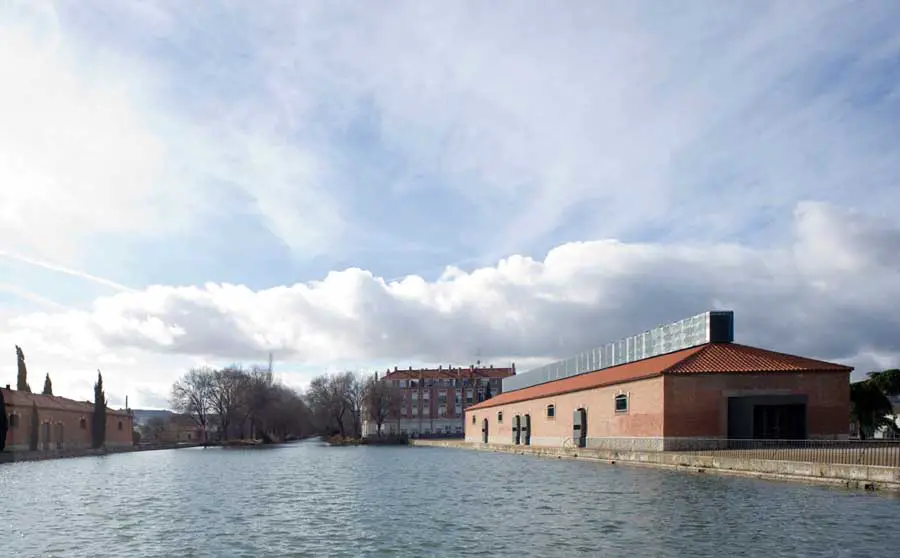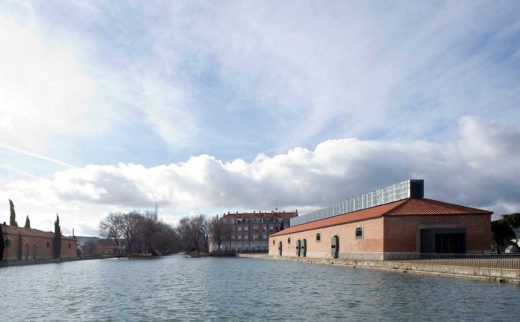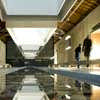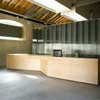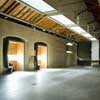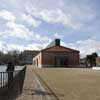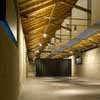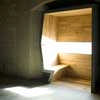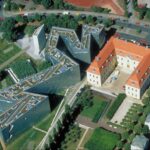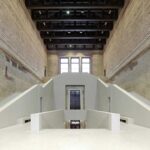Museo del Agua Palencia Building, Spanish Architecture Design Project, Property
Museo del Agua de Palencia
Palencia architecture design by MID estudio in Spain: New Spanish Property
12 May 2010
Museo del Agua de Palencia Building
Design: MID estudio
Location: Palencia, a city south of Tierra de Campos, in north-northwest Spain, the capital of the province of Palencia in the autonomous community of Castile-Leon
An approach to the place
The construction of a Channel that would communicate the inner Castilla with Reinosa to allow the surplus cereals to be transported and finally reach the Santander seaport was started in the mid eighteenth century. It was not completely finished, though, due to the arrival of the railway. Anyway, the project, which was based on the illustrated idea of beauty, still maintains the fascination that it once awoke.
The dock of the Channel of Castilla in Palencia belongs to its Southern and latest branch. Approximately in 1803 the construction works of the dock started. The dock is, in fact, a widening at the end of the channel where barges could be tied up so that they could load and download. Much later, in the first half of the twentieth century, two grain stores where built on both sides of the dock.
The dock is located next to the river Carrión and the historic center of Palencia, with access from Puente Mayor bridge, and between the Sotillo de los Canónigos park and the Isla Dos Aguas park, being part of the green belt of the city. The Channel connects the city with its rural surroundings and the paths on both sides of it are used by strollers and cyclists. In spite of it, the buildings and the urbanization in the dock are in an state of neglect and the city has forgotten about this place.
The Museum of Water is the first phase, providing cultural content and use to one of the buildings in the dock, within a more ambitious approach that expects and claims to bring the use and enjoyment of the dock and the Channel of Castilla back to the citizens. In a second phase, it was expected that a small pavilion-cafeteria and a parking lot area would complete the museum.
The proposal for the urbanization aims at the image of a fluvial harbour which originally was. This image has been disfigured by addition of numerous urban elements an “domestic” kind of gardening. A diaphanous and clear space, recovering the illustrated spirit and making it visible and accessible at the same time is proposed instead. The new limits of the dock will be defined by riverside vegetation offering protection in sensitive points. Next to the museum an alignment of Phragmites sp. and Populus alba group are planted, protecting the dock and the building from the parking lot. (Still not done)
The museum
The creation of the Museum of Water has made it possible to refurbish one of the stores in the dock. The building has a rectangular floor measuring 62,4×10,3m, concrete load-bearing walls with a brick sheet on the outer side and a repetitive rhythm both of doors and windows. Wooden trusses with metallic straps form the roof´s structure.
The proposal links the abstract content of the museum to the neutral continent by means of architectural language. A skylight which goes along the ridge of the roof gives sense to the different spaces of the museum bringing and qualifying light into each of them and providing the building of meaning. The skylight is superposed to the pre-existing structure but does not alter it and gets accommodated to its rigorous modulation. That way, both structures, the new one and the old one, complement each other. “Boxes” pending from the skylight bring light inside.
The program is divided in three areas: a reception area with administration and services, a temporary exhibition area and the permanent exhibition area. The building is long and narrow so it establishes a sequential route along the spaces where the visitor always discovers them in the same order.
After the access and the reception there is an exempt piece covered in glass so that it dematerializes with a game of reflections. It holds the administration, facilities, toilets and a small store. The visitor should walk around it to access the exhibition area of the museum. The light from the skylight reflects on its cover.
The space for temporary exhibitions is diaphanous and versatile and multiple activities such as exhibitions, conferences, etc can be held on it. The light coming from the skylight, changing throughout the day and the seasons, enters freely through it.
A sheet of water starts at the end of the temporary exhibition area and crosses the permanent exhibition space, situated at the end of the route, compelling the visitor to surround it. “Boxes” hanging from the skylight go down to light up exclusively the sheet of water achieving a more tenuous and quiet space. At the same time, the permanent exhibition which will be carried out via interactive audiovisuals will be projected onto those boxes´ surface. The tangible presence of the water moving and the sound that it generates are part of the sensory experience of the museum.
Doors and windows of the existing building are now occupied by metallic and wooden devices. They are designed, like the skylight on the roof is, to drive and filter the light or to direct the visitor´s gaze to the water surface of the dock, as well as to create small spaces which now have the shape of peculiar bow windows where people on a visit can take a break.
Museo del agua de Palencia – Building Information
Architects: MID estudio: David Serrano Amatriain – Maier Vélez Olabarria
Collaborators: Josep Agustí de Ciurana and Raúl Montero Martínez.(architects)
Quantity surveyor: Pedro Mari Legarreta Nuin
Engineers: Inarq
Client: Municipality of Palencia (Spain)
Contractor: Aspica Constructora SA.
Site manager: Jorge García Grande
Exhibition design: David Pérez for Tiquitoc
Photographs: Helena Velez Olabarria
Museo del Agua images / information from MID estudio
Location: Museo del agua de Palencia, Spain
Spanish Buildings
Contemporary Spanish Architectural Projects
Spanish Architectural Designs – chronological list
Architecture Walking Tours by e-architect
Spanish Architecture – Selection
Design: Foster + Partners
Nou Camp Stadium
City of Justice, Barcelona and L’Hospitalet de Llobregat
City of Justice Barcelona
Guggenheim Museum
Architect: Frank Gehry
Guggenheim Museum Bilbao
Design: Estudio Lamela Arquitectos
Spanish Stadium Building : Real Madrid
Comments / photos for the Museo del Agua Spain Architecture page welcome

